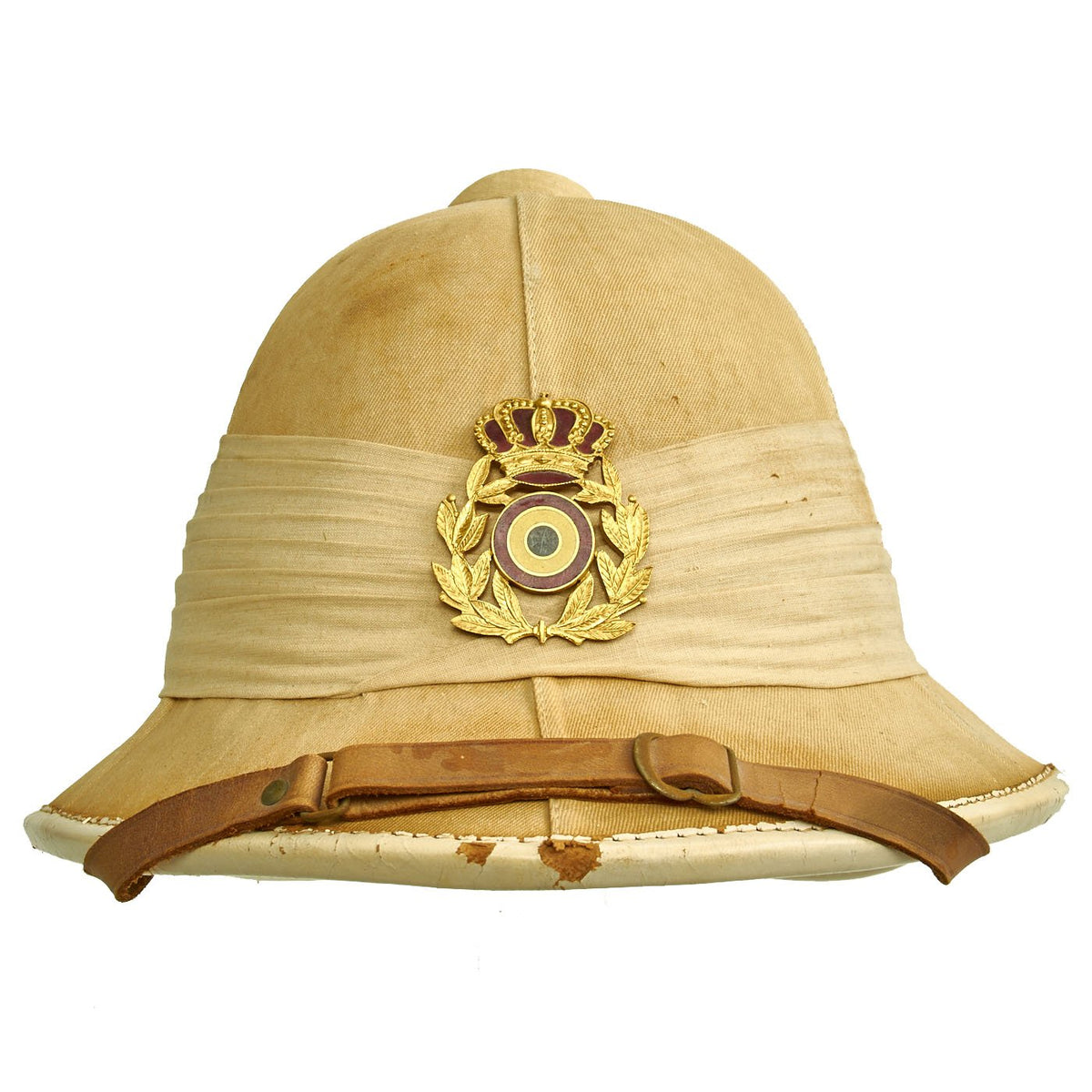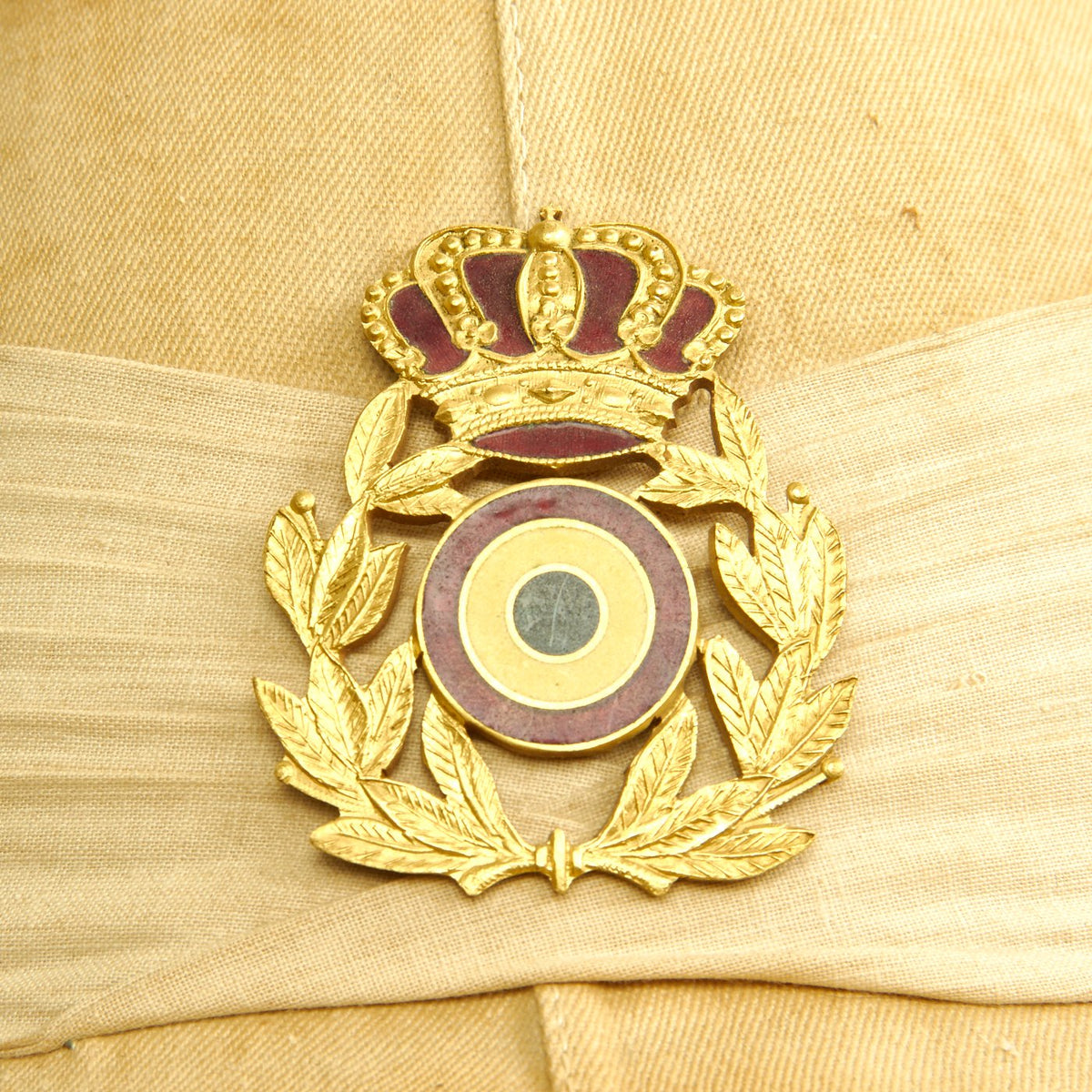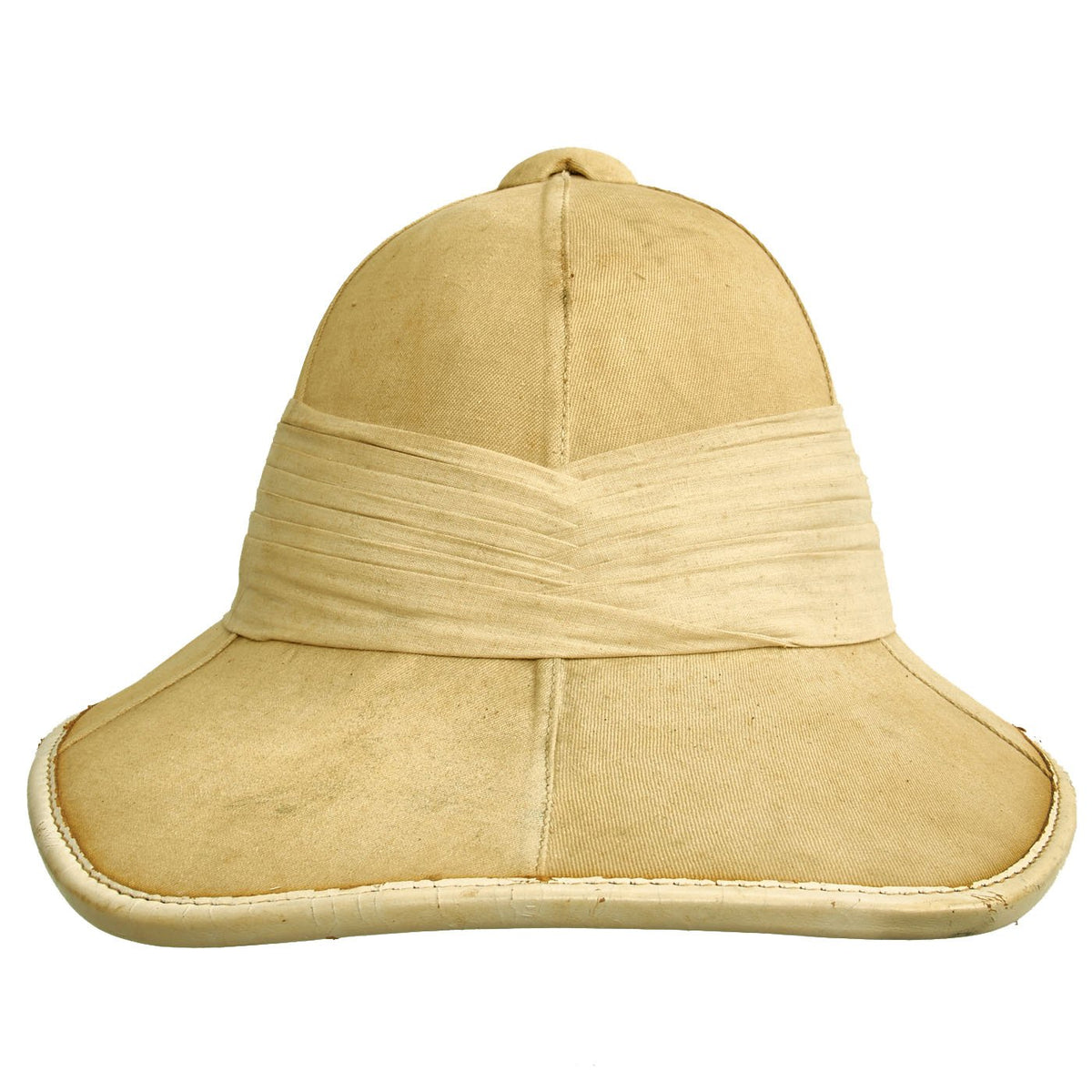Original Belgian M1950 Colonial Service Pith Sun Helmet with Puggaree – Belgian Congo Original Items
$ 195,00 $ 78,00
Original Item: Only One Available. The small country of Belgium only gained its true independence in 1830, and became established as a Constitutional Monarchy. By this time, many of the other European powers had already been colonizing the world for centuries, so there was little of the world left that had not already come under the European sphere of influence. During the 1840s and 50s, King Leopold I tentatively supported several proposals to acquire territories overseas. In 1843, he signed a contract with Ladd & Co. to colonize the Kingdom of Hawaii, but the deal fell apart when Ladd & Co. ran into financial difficulties. Belgian traders also extended their influence in West Africa but this too fell apart following the Rio Nuñez Incident of 1849 and growing Anglo-French rivalry in the region.
By the time Belgium’s second king, Leopold II, was crowned, Belgian enthusiasm for colonialism had abated. Successive governments viewed colonial expansion as economically and politically risky and fundamentally unrewarding, and believed that informal empire, continuing Belgium’s booming industrial trade in South America and Russia, was much more promising. As a result, Leopold pursued his colonial ambitions without the support of the Belgian government, which meant there would be no oversight.
One of the places Leopold II managed to acquire was the Congo region in 1885, with the help of other European powers, which became the Congo Free State. This loosely organized territory was primarily used for one reason: economic exploitation. Ivory and Rubber flowed out of the area, at the cost of millions of lives. Disease, violence, working conditions, and other factors led to this massive loss of life. By the turn of the century, the violence used by Free State officials against indigenous Congolese and the ruthless system of economic extraction led to intense diplomatic pressure on Belgium to take official control of the country, which it did in 1908, creating the Belgian Congo, which is today the fully independent Democratic Rebublic of the Congo.
This very nice pith sun helmet comes from the immediate Post WWII Period, and is in fact dated 1953 on the underside of the sweatband. It follows the standard European design, with a fabric covered pith/cork body, with 6 panels of fabric covering the top. It has leather trim around the edge, and a nice “puggaree” wrapping around it, usually indicating issue to an officer. The front has a very nice badge, which shows the Belgian Royal Crown over a tri-color cockade (Red, Yellow and Black), with a laurel leaf wreath. We have seen some refer to this as a “Belgian Marines” badge, but we are not sure on this. We are however certain that this is a colonial issue badge.
There is a small label on the back of the sweatband liner, giving the size as 53cm or 6 1/2, and there are the maker marks F.N. – Z.M. 1953 and LEVIOR 53 stamped on the underside. The leather chin strap is in good condition, and is fully adjustable.
A very nice mid 20th century pith helmet, ready to add to your collection!
Fast Shipping with Professional Packaging
Thanks to our longstanding association with UPS FedEx DHL, and other major international carriers, we are able to provide a range of shipping options. Our warehouse staff is expertly trained and will wrap your products according to our exact and precise specifications. Prior to shipping, your goods will be thoroughly examined and securely secured. We ship to thousands clients each day across multiple countries. This shows how we're dedicated to be the largest retailer on the internet. Warehouses and distribution centres can be located throughout Europe as well as the USA.
Note: Orders with more than one item will be assigned a processing date depending on the item.
Before shipping before shipping, we'll conduct a thorough inspection of the items you have ordered. Today, the majority of orders will be delivered within 48 hours. The delivery time will be between 3-7 days.
Returns
The stock is dynamic and we cannot completely manage it because multiple stakeholders are involved, including our factory and warehouse. So the actual stock may alter at any time. It's possible that you may not receive your order once the order has been made.
Our policy is valid for a period of 30 days. If you don't receive the product within 30 days, we are not able to issue a refund or an exchange.
You can only return an item if it is unused and in the same state as the day you received it. You must have the item in its original packaging.
Related products
Uncategorized
Uncategorized
Uncategorized
Uncategorized
Uncategorized
Uncategorized
Band of Brothers ORIGINAL GERMAN WWII Le. F.H. 18 10.5cm ARTILLERY PIECE Original Items
Uncategorized
Uncategorized
Uncategorized
Uncategorized
Uncategorized
Uncategorized
Uncategorized
Uncategorized
Uncategorized
Uncategorized
Angolan Rebel 1970s era 60mm Inert Display Mortar from Angolan Civil War Original Items
Uncategorized
Uncategorized
Armored Burgonet Helmet & Polearm from Scottish Castle Leith Hall Circa 1700 Original Items
Uncategorized
Uncategorized
Armoured Fighting Vehicles of the World: AFVs of World War One (Hardcover Book) New Made Items












































































